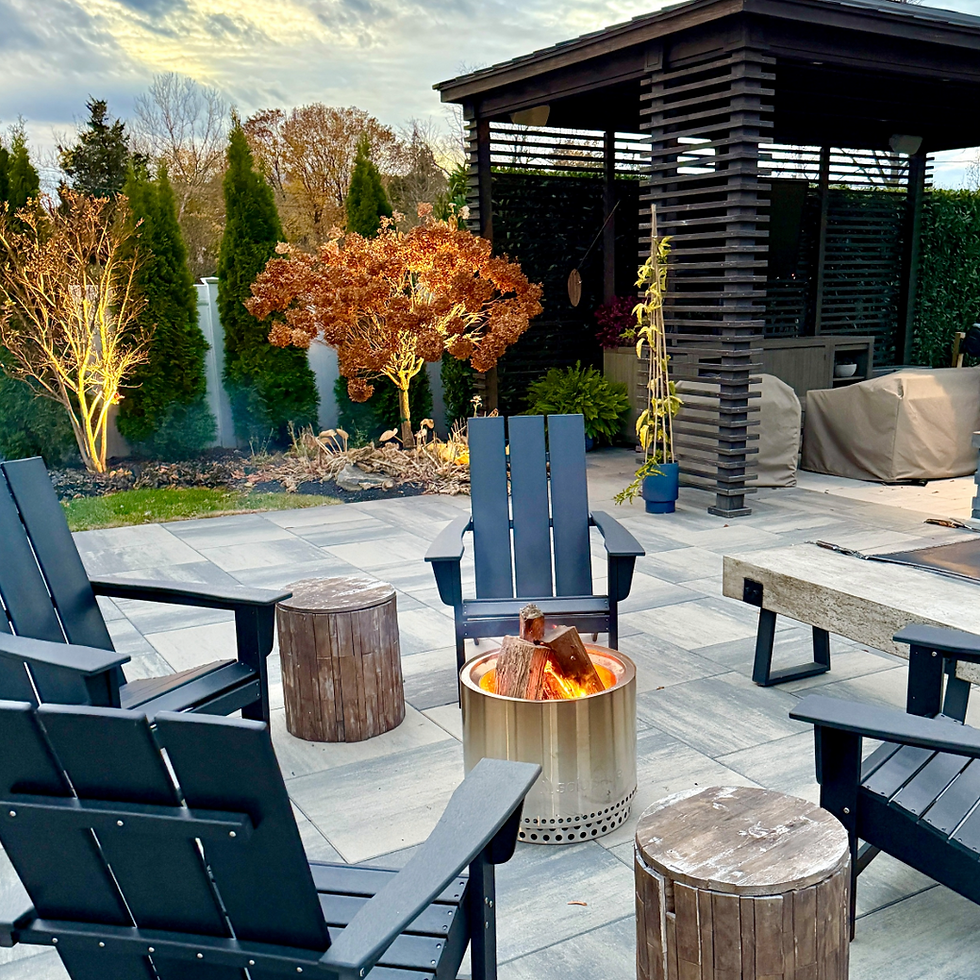Shade Gardens
- Rebekah
- Aug 12, 2020
- 4 min read
Updated: May 2
Do you have a shaded spot in your garden? Or is your entire yard shaded? We often help homeowners add color and pizzazz to a shady area of their yards, and we are happy to help you today! In this blog post, we are talking about 10 amazing plants that thrive in shade and will add color and interest to an otherwise oftentimes drab spot of the garden.
Let's start with trees and work our way down to shrubs, perennials, and annuals from here.
Dogwood: Dogwoods make an excellent understory tree. What this means is, if you have a large tree (think Oak, Maple, or Sycamore, for example) that has created some lovely shade in your garden, planting a Dogwood under its branches will draw your eye downward into your shaded area and provide a great backdrop for some beautiful shrubs and/ or perennials in that area. Dogwoods can handle full sun, sort of, but perform at their absolute best and bloom best when they are understory trees.
Japanese Maple: One of the most highly regarded trees for foliage, color, and multi-season interest, Japanese Maples also make excellent additions to shade gardens. Most varieties are slow-growing and stay small. Delicate leaves typically turn gorgeously colored in fall. Japanese Maples can be the colors of orange, yellow, red, lime green, or purple.

Hydrangea: Not all Hydrangeas are created equal. There are MANY that will perform excellently in shade, but there are also those that require mostly to full sun locations. Hydrangeas vary in size from around 3-4' tall and wide, up to 6-8' tall and wide, depending on variety. They boast magnificent, large blooms all summer in shades of white, cream, pink, and blue. Some varieties have blooms that change color depending on the pH level of your soil. No matter what color of bloom you adore best, Hydrangeas are a worthy contender when planning out your shade garden.
Witch Hazel: This shrub is not as widely used in the plant world, however, it features delicate, beautiful blooms all over it in winter, when not much else is blooming! Blooms are typically yellow, orange, or reddish-orange. Witch Hazel needs part sun to bloom best- it would be ideal in morning sun with afternoon shade, for example. It looks beautiful combined with other winter-interest plants, such as Hellebores.
Lenten Rose: Oh, how we love them. These shade-loving perennials look their best in winter to early spring. Their blooms are long-lasting and add such cheer in dreary cold months of the year. If you can, plant them in an area of your shade garden where you can enjoy them from inside also. Hellebores (also known as Lenten Roses) come in many different colors and bloom at slightly different times, depending on type (from Christmas to mid-spring).
Hosta: They come in many shades of blues, greens, and variegated foliage. They are a staple of many shade gardens and look very nice around the base of a larger tree in a gardening bed. Be careful about planting them if you have deer in your garden often, as deer usually love to munch on hosta leaves!

Coral Bell: They come in a variety of colors, and oftentimes these perennials display magnificent fall foliage. They produce dainty, small, tall flowers in summer, but the real showstopper is the color their foliage adds to a shade garden. Often (but not always) if we have a mild winter in Middle TN, their foliage will stay throughout the colder months.

Fern: The Japanese painted fern (shown above) is magnificent. Ferns come in many colors and sizes. Some ferns (such as Boston ferns) will not survive winters in our area; however, many perennial ferns, such as cinnamon ferns, Japanese painted ferns, and autumn brilliance ferns, will add wonderful texture to your shade garden year after year.
Impatiens: Shade impatiens add color as a spring and summer annual in a gardening bed. They come in so many shades from whites, deep purples, oranges, and reds. From mid-April to mid-October in Middle TN, they add bright pops of color in shady spots and bring a smile to anyone who passes them by! Most shade impatiens grow to be only 15-20" tall and they create a mound as they grow.
Elephant Ear: These plants thrive in shade and create a tropical look in your garden. Some elephant ears are perennial in our region, and some are annuals. Be sure to know which variety you are purchasing to know if you will be re-planting it next year in your garden or not! Many of us think of the huge elephant ears that grow to be 5' tall, but there are many varieties that stay smaller and grow to be only 2' tall by 2' wide. We typically offer several varieties of these beauties at the garden center.
Which of the plants we mentioned today do you love? Which ones would you like to add to your shade garden? We would love to see you soon at your locally owned, locally grown nursery, where we are always happy to help you select plants perfect for shady spots in your garden.



